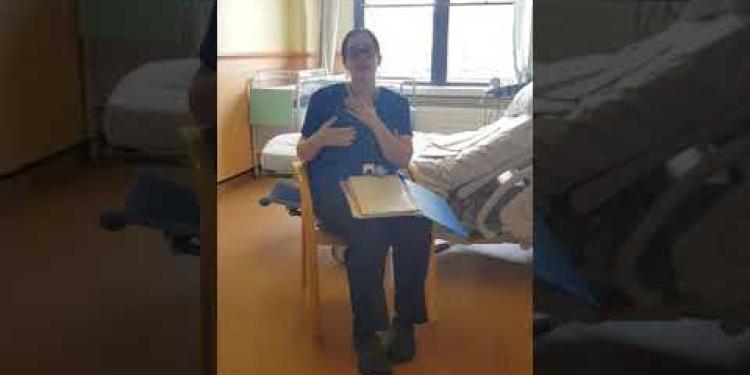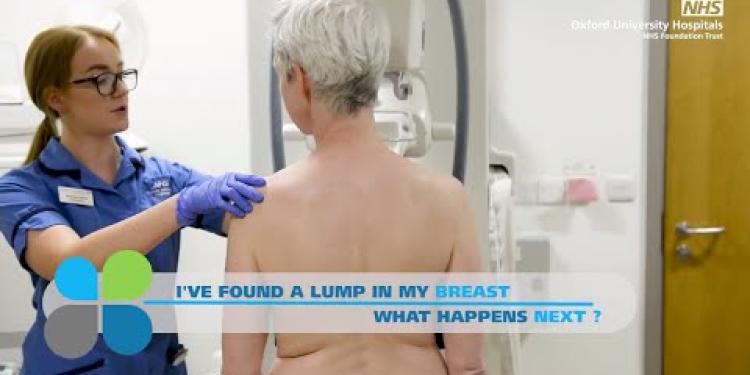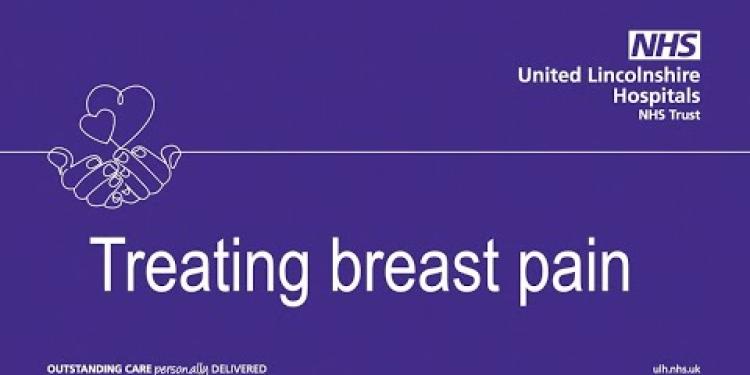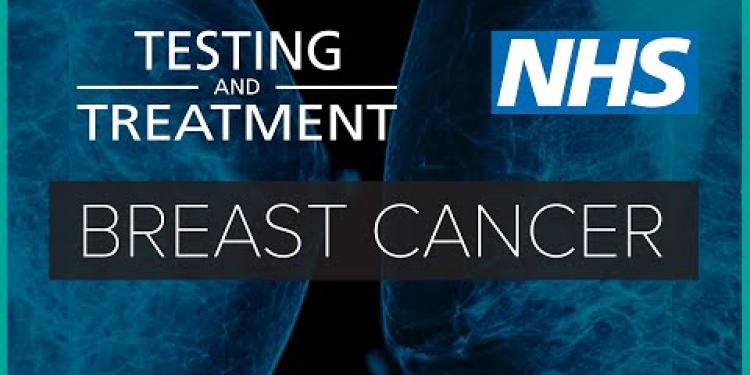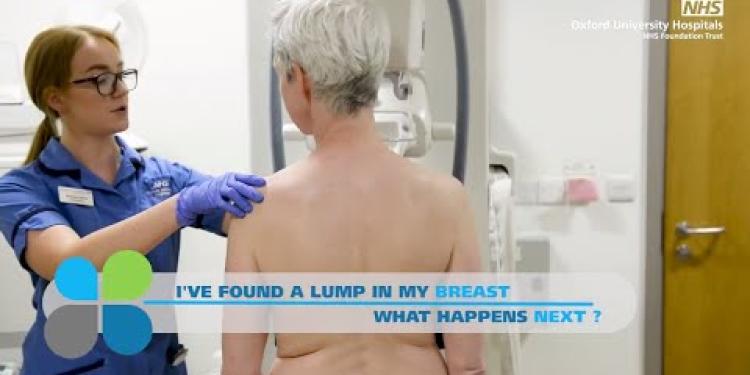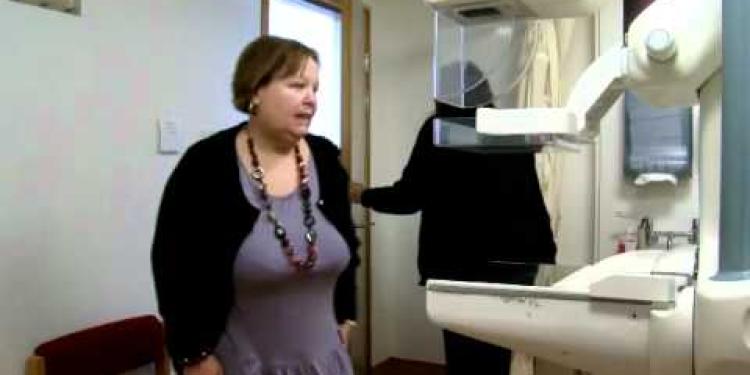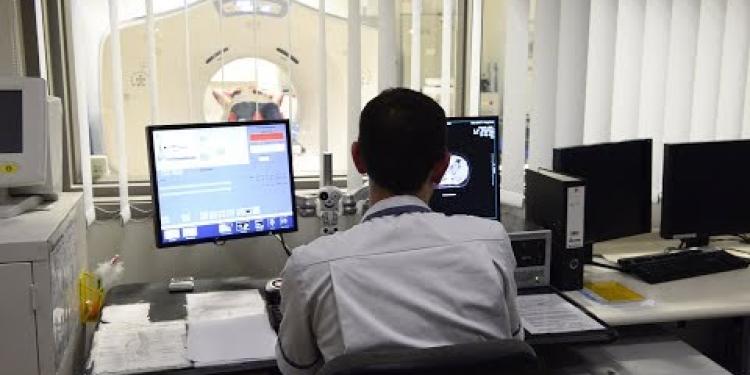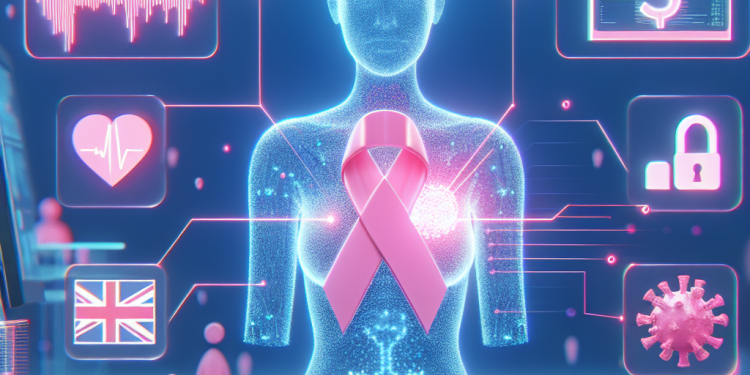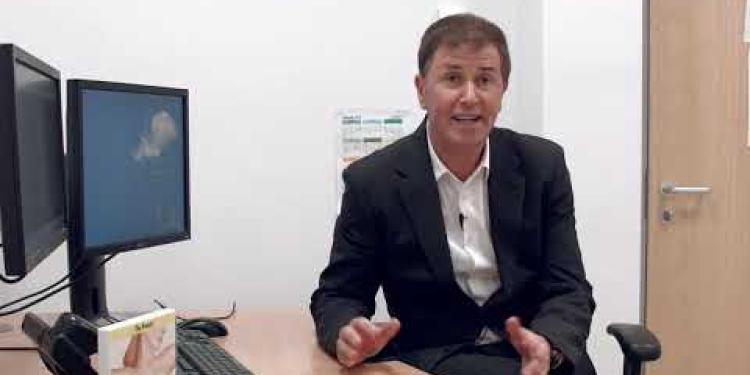Important Information On Using This Service
- Ergsy carefully checks the information in the videos we provide here.
- Videos shown by YouTube after a video has completed have NOT been reviewed by ERGSY.
- To view, click the arrow in the center of the video.
Using Subtitles and Closed Captions
- Most of the videos you find here will have subtitles and/or closed captions available.
- You may need to turn these on and choose your preferred language.
Turn Captions On or Off
- Go to the video you'd like to watch.
- If closed captions (CC) are available, settings will be visible on the bottom right of the video player.
- To turn on captions, click settings.
- To turn off captions, click settings again.
Find A Professional
Videos from Ergsy search
More Videos of Interestdiagnosis
Related Videosdiagnosis
Breasts and Mastitis: Understanding and Managing the Condition
Understanding Breasts
Breasts are complex and essential parts of the female anatomy, primarily composed of glandular tissue, fatty tissue, and connective tissue. They contain lobules (milk-producing glands) and ducts (tubes that carry milk to the nipple). The development of breasts typically begins during puberty under the influence of hormones such as estrogen and progesterone. Beyond their role in breastfeeding, breasts also have significant implications for a woman's self-image and overall health.What is Mastitis?
Mastitis is an inflammation of breast tissue, which can affect both breastfeeding and non-breastfeeding women, although it is most common in the former group. The condition often results from a bacterial infection, leading to painful, red, and swollen breasts. The primary cause of mastitis in breastfeeding women is milk stasis, which occurs when milk is not properly emptied from the breast. This can create an environment where bacteria, typically from the baby's mouth or the skin, can grow and cause infection.Symptoms of Mastitis
Women experiencing mastitis often notice several symptoms, including: - A painful area in one breast - Swelling and redness - Fever and chills - A sensation of warmth in the affected area - Flu-like symptoms, such as fatigue Early diagnosis and treatment are essential to managing these symptoms effectively.Preventing and Treating Mastitis
Prevention of mastitis involves good breastfeeding practices, such as ensuring proper latch and regularly emptying the breasts. Here are some practical steps: - Alternate breastfeeding positions to ensure complete breast drainage. - Avoid tight bras or restrictive garments that can impede milk flow. - Stay hydrated and ensure proper nutrition to support the immune system. Treatment typically involves: - Continued breastfeeding or expressing milk to relieve engorgement. - Applying warm compresses to the affected area to alleviate pain. - Rest and adequate fluid intake to aid recovery. - Antibiotic therapy may be prescribed by a healthcare professional if a bacterial infection is confirmed. It's crucial for women in the UK to consult their GP or a lactation consultant if they suspect mastitis. Early intervention can prevent complications and promote a swift recovery.Frequently Asked Questions
What is mastitis?
Mastitis is an inflammation of breast tissue that can involve an infection. It results in breast pain, swelling, warmth, and redness. In some cases, it can cause flu-like symptoms such as fever and chills.
What causes mastitis?
Mastitis is often caused by blocked milk ducts or bacteria entering the breast. Breastfeeding women are most commonly affected, but it can also occur in non-breastfeeding women.
What are the symptoms of mastitis?
Symptoms of mastitis include breast tenderness or warmth to the touch, general malaise, breast swelling, pain or a burning sensation continuously or while breastfeeding, skin redness, and fever.
How is mastitis diagnosed?
A doctor can usually diagnose mastitis based on a physical examination and symptoms. In some cases, additional tests such as milk cultures or ultrasounds may be conducted to rule out other conditions.
Can mastitis affect breastfeeding?
Yes, mastitis can make breastfeeding very painful. However, it is generally recommended to continue breastfeeding or expressing milk to help clear the infection.
What is the treatment for mastitis?
Treatment typically involves antibiotics to clear the infection, pain relievers to reduce discomfort, and continued breastfeeding or milk expression to clear blocked ducts. Warm compresses and proper breastfeeding techniques may also help.
Is it safe to breastfeed while having mastitis?
Yes, it is safe and often beneficial to continue breastfeeding. It helps keep milk flowing and can help clear the infection more quickly.
How can mastitis be prevented?
Preventive measures include ensuring proper latch during breastfeeding, fully draining the breast during feeds, avoiding long gaps between feeds, and using different breastfeeding positions.
What should I do if I suspect I have mastitis?
You should contact your GP or a breastfeeding specialist. Early treatment is important to prevent complications.
Can mastitis recur?
Yes, mastitis can recur, especially if the underlying issues that caused it initially are not addressed. Ongoing proper breastfeeding techniques and regular breast care are important to prevent recurrence.
Is mastitis common among breastfeeding women?
Yes, mastitis is relatively common among breastfeeding women, particularly within the first few months postpartum.
Can women who are not breastfeeding get mastitis?
Yes, although it is less common, women who are not breastfeeding can also develop mastitis due to other factors such as nipple injury, wearing tight clothing, or underlying breast conditions.
Can mastitis lead to more serious complications?
If left untreated, mastitis can lead to an abscess, which is a collection of pus within the breast. This usually requires drainage and, in severe cases, surgery.
What lifestyle changes can help manage mastitis?
Maintaining good breastfeeding techniques, staying hydrated, resting, wearing loose-fitting clothing, and ensuring proper breast hygiene can help manage and prevent mastitis.
When should I seek medical help for mastitis?
You should seek medical help if you have persistent symptoms despite self-care measures, a high fever, or if you suspect an abscess or are unable to continue breastfeeding due to pain.
Useful Links
Useful links from: About Breast cancer - signs and symptoms | NHS
- NHS - Breast cancer in women Comprehensive information on breast cancer, including symptoms, causes, diagnosis, treatment, and prevention.
- Breast Cancer Now - Symptoms and signs Detailed guide on the signs and symptoms of breast cancer provided by Breast Cancer Now, a leading UK charity.
- Cancer Research UK - Breast cancer symptoms Information from Cancer Research UK on the common symptoms of breast cancer and when to see a doctor.
- Macmillan Cancer Support - Signs and symptoms of breast cancer Supportive resource from Macmillan Cancer Support offering information on the signs and symptoms of breast cancer and how to cope with diagnosis and treatment.
Useful links from: I've found a lump in my breast - What happens next? The breast diagnostic clinic
- NHS - Breast cancer in women Provides comprehensive information on breast cancer, including symptoms, diagnosis, treatment options, and what to expect at the breast clinic.
- NHS - Breast screening Details about the NHS breast screening program, including who is eligible, how the screening is done, and what the results mean.
- Breast Cancer Now - What to expect at a breast clinic appointment Offers detailed information on what happens at a breast clinic appointment, including the types of tests and examinations that may be performed.
- Macmillan Cancer Support - Tests for breast cancer Provides an overview of the various tests that may be conducted to diagnose breast cancer, with explanations of each procedure.
Useful links from: Treating breast pain | United Lincolnshire Hospitals NHS Trust
- NHS - Breast Pain (Mastalgia) Provides detailed information on the causes, diagnosis, and treatment options for breast pain, including self-care tips and when to seek medical help.
- Breast Cancer Now - Breast Pain Offers comprehensive guidance on understanding breast pain, potential causes, and how to manage it, along with information on related breast conditions.
- Macmillan Cancer Support - Breast Pain Macmillan Cancer Support provides resources and support for those experiencing breast pain, including symptom management and advice on when to see a doctor.
- United Lincolnshire Hospitals NHS Trust - Breast Care Information on breast care services provided by the United Lincolnshire Hospitals NHS Trust, including advice on managing breast pain and accessing specialist care.
Useful links from: Breast cancer: testing and treatment | NHS
- NHS - Breast cancer NHS overview page on breast cancer, including information on symptoms, causes, diagnosis, treatment, and living with breast cancer.
- NHS - Breast cancer - Diagnosis Information from the NHS on the various tests and procedures used to diagnose breast cancer, including mammograms, ultrasounds, and biopsies.
- Breast Cancer Now - Treatment for breast cancer Comprehensive guide from Breast Cancer Now on the treatment options available for breast cancer, including surgery, chemotherapy, radiotherapy, and hormone therapy.
- Macmillan Cancer Support - Breast cancer Resourceful guide from Macmillan Cancer Support providing information on breast cancer, including symptoms, stages, diagnosis, treatments, and support options.
Useful links from: I've found a lump in my breast - What happens next? The breast diagnostic clinic
- NHS - Breast Cancer Overview Information from the NHS on the symptoms, diagnosis, and treatment of breast cancer.
- NHS - Breast Lumps Guidance from the NHS on what steps to take if you find a lump in your breast and when to see a GP.
- Breast Cancer Now - Your Breast Clinic Appointment Breast Cancer Now provides information on what to expect at your breast clinic appointment and the diagnosis process.
- Macmillan Cancer Support - Breast Lumps Macmillan Cancer Support offers advice on breast lumps, including potential causes and the steps for diagnosis.
Useful links from: Tower Hamlets breast screening programme
- NHS Breast Screening Programme Official NHS page providing extensive information on the breast screening programme, its importance, procedures, and how to book an appointment.
- Tower Hamlets NHS Breast Screening Barts Health NHS Trust resource page dedicated to breast screening services in Tower Hamlets, including details on the local screening unit and contact information.
- Breast Cancer Now UK-based charity offering information and support on breast cancer screening, diagnosis, and what to expect from the screening process.
- Jo's Cervical Cancer Trust - Breast Screening Section Although primarily focused on cervical cancer, this UK charity provides useful information on breast screening as part of their broader women's health resources.
Useful links from: Other Things You Need to Know About Breast Screening
- NHS - Breast Screening Official NHS page providing comprehensive information on breast screening, including the process, benefits, and how to get screened.
- Breast Cancer Now - Breast Screening Breast Cancer Now's in-depth guide on breast screening, including eligibility, the screening process, and follow-up procedures.
- Breast Cancer UK - Breast Screening Information from Breast Cancer UK about reducing breast cancer risk and the importance of regular breast screening.
- Macmillan Cancer Support - Breast Cancer Screening Macmillan Cancer Support's resources for understanding breast cancer screening and its role in early detection and treatment.
Useful links from: AI Breast Cancer Screening in the UK
- NHS Breast Screening Programme This NHS page provides information about the breast cancer screening programme in the UK, explaining the screening process, eligibility, and what to expect.
- Cancer Research UK - Breast Cancer Screening Cancer Research UK's page on breast cancer screening offers insights into how breast screening works, its benefits and risks, and the role of AI in enhancing screening techniques.
- Breast Cancer Now - The Impact of AI on Breast Cancer Screening Breast Cancer Now discusses how AI technologies are contributing to improvements in breast cancer screening, with potential benefits for early detection and patient outcomes.
- The Royal Marsden NHS Foundation Trust - Technology and Innovations in Cancer Screening The Royal Marsden NHS Foundation Trust highlights the latest innovations in cancer screening technology, including the use of AI to improve diagnostic accuracy in breast cancer screening.
Useful links from: Hand expressing
- NHS - Hand Expressing Breast Milk Comprehensive guide from the NHS on how to hand express and store breast milk. Includes step-by-step instructions and tips for nursing mothers.
- La Leche League GB - Hand Expression Resources and advice on hand expressing breast milk from La Leche League Great Britain, a charity supporting breastfeeding mothers.
- National Childbirth Trust (NCT) - Expressing Breast Milk by Hand Detailed information from the NCT on how to express breast milk by hand, including tips for effective expression and storage.
- Breastfeeding Network - Expressing and Storing Breast Milk Guidance from the Breastfeeding Network on expressing and storing breast milk, with practical advice and downloadable resources.
More Videos of Interestdiagnosis
Related Videosdiagnosis
Have you found an error, or do you have a link or some information you would like to share? Please let us know using the form below.
- Ergsy carfully checks the information in the videos we provide here.
- Videos shown by Youtube after a video has completed, have NOT been reviewed by ERGSY.
- To view, click the arrow in centre of video.
- Most of the videos you find here will have subtitles and/or closed captions available.
- You may need to turn these on, and choose your preferred language.
- Go to the video you'd like to watch.
- If closed captions (CC) are available, settings will be visible on the bottom right of the video player.
- To turn on Captions, click settings .
- To turn off Captions, click settings again.
